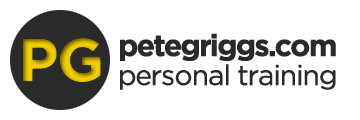Love it or hate it Cardio Vascular (CV) work is an essential part of your workout, In this article I’d like to tell you some tips and tricks that I have compiled so you can get the most out of your CV work.
I hear a lot of people say “I hate CV, its boring!” if you fall into this category or even if you don’t just take a look at the benefits a regular CV programme can have on you.
- Reduction in blood pressure
- Increased HDL-cholesterol (the good one)
- Decreased total cholesterol Decreased body fat stores
- Increased aerobic work capacity
- Decreased symptoms of anxiety, and depression
- Increased heart function
- Improved metabolism
How long should I do CV work for? Is a question I get a lot. Well to answer that I first need to tell you about the energy stores in the body. Your muscle stone energy which allows them to move, this energy is stored within the muscles themselves. You also have your fat stores in your body that everyone is trying to get rid off, fat store can be used as energy when you are working out too. Read on and I’ll tell you how.
The energy within you muscles must first be used up before your body starts to use its fat stores. It will take you about 30-40 minutes of moderate exercise to use up the energy in your muscles before any fat is being used. If you want to lose weight you must make your CV workouts at least 40mins long, anything less than this and you won’t be using you fat stores as energy. Aim to build up you CV workouts until you get to and 1 hour.
You should be doing your CV workouts 3-5 times a week. If you are new to exercise start with 3 times a week and build up from there, more experienced people should start on 4 or 5. If you do less than 3 times a week you probably won’t notice much difference in your fitness and weight. Doing more than 5 is not healthy as you run the risk of over training and getting ill.
How hard you should work while doing your CV work, or the intensity, is important too. To work this out you will need to use your heart rate, you will need to get your heart rate to a certain level in order to achieve any benefit from you CV workouts. Beginners should start at a lower intensity and then build up session by session. Here is how to work it out.
Take you current age (in years) from 220. This will give you your maximum heart rate. 220-age= Maximum heart rate.
Take your maximum heart rate and multiply it by 0.6 this will give you your lower limit. Maximum Heart Ratex0.6=Lower limit.
Take your maximum heart rate again and multiple it by 0.9 this will give you your higher limit (the rate it is dangerous to go above). Maximum Heart Ratex0.9=Higher Limit.
Your lower and higher limit numbers are the beats per minute of your heart. You need to work hard enough so your heart rate comes within the range of the lower and higher limit. Use a heart rate monitor when working out to find out your heart rate. A lot of modern machines have them built in.
Example I am 24 years old:
220-24=196 my maximum heart rate is 196 beats per minute.
196×0.6=118 my lower limit is 118 beats per minute.
196×0.9=176 my higher limit is 176 beats per minute.
So when I have a CV workout I need to keep my heart rate between 118 – 176 beats per minute for it to have any benefit to me.
Last thing that I want to talk about is improvement. You should always aim to improve on your last CV workout. Make it a little faster, a bit longer, a bit harder you can choose. This is important to do because as you consistently improve session by session your fitness will get better session by session. Remember don’t do the same workout twice always make the next one better than the last one. OK so the points to remember when doing your CV workouts are:
CV workouts should be at least 40 minutes long, build up to this if you can’t manage it.
You need to do you CV workouts 3-5 times a week.
Keep you heart rate within the Lower and Higher limits when doing your CV workouts.
Always improve on the last workout.
To book a session or for comments and questions call or e-mail me:
E-mail: pete@petegriggs.com. Phone: 07947 049889
Please Read Disclaimer: The opinions expressed in the above articles are those of the authors and theirs alone. Information in the articles is not to be taken as medical advice, please consult you doctor before undertaking any type of exercise programme especially if you have any medical conditions.
